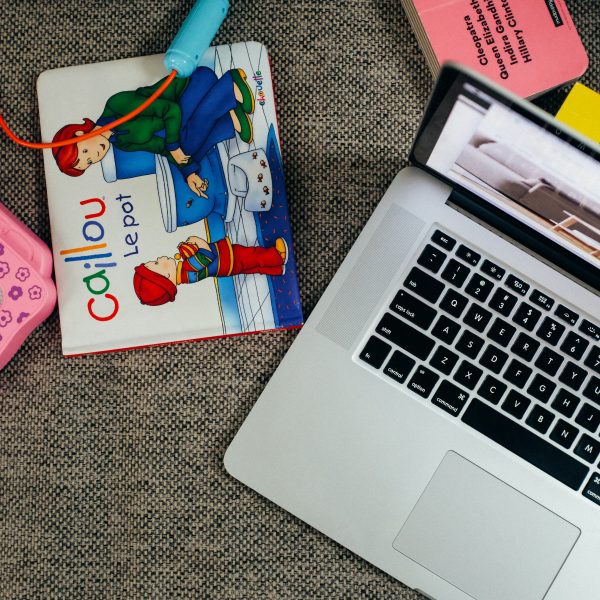Embedding inclusive practices for children with disabilities – Dr Jane Warren

University of Wollongong academic, Dr Jane Warren, recently spoke with the New South Wales Department of Education about how to create inclusive environments for children with disability in early childhood education and care (ECEC), and why this benefits everyone.
Key highlights of this conversation are captured in the piece below, however readers are encouraged to access the full conversation through this link.
Embracing Quality Area Five
Dr Warren opened the conversation by discussing Quality Area Five of the National Quality Framework, and element 5.1 particularly, which looks at the role which important relationships play in ensuring that all children feel secure, confident and included.
Here, she said, educators should reflect on important questions such as “how can we ensure that words like ‘dignity’, ‘rights’, ‘meaningful’, ‘respectful’ and ‘equitable’ are really addressed and not just holistic words without practical application?”
When it comes to children with additional needs, it is “important to begin by saying that enrolment does not equal inclusion. To ensure all children feel secure, confident and included there are a number of important, relevant and essential things to consider, irrespective of the environment you are in.”
Some of these considerations include:
- rights of the child
- valuing individuality and uniqueness
- benefits of inclusion for everyone
- building collaborative teams around a child
- creating a ‘culture of inclusion’.
Rights of the child
The United Nations Convention on the Rights of the Child (UNCRC, 1989) brought a historic commitment to recognise children as individuals and ensure every child has every right.
This, Dr Warren highlighted, indicates that all children, whatever their race, religion or abilities; whatever they think or say, whatever type of family they come from hold these rights.
“No child has less right than another. When we consider the diversity of children within our ECEC services, we must remember that even based only on UNCRC, inclusion is not optional. Inclusion ensures everyone’s uniqueness is valued,” she said.
Valuing individuality and uniqueness
In addition to the UNCRC, The Convention on the Rights of Persons with a Disability (CRPD, 2008), follows significant work by the United Nations to change attitudes and approaches to people with disabilities.
The purpose of the CRPD is “to promote, protect and ensure the full and equal enjoyment of all human rights and fundamental freedoms by all persons with disabilities, and to promote respect for their inherent dignity”.
Benefits of inclusion for everyone
The benefits of a truly inclusive environment extend beyond the child with a disability.
“While inclusion certainly benefits that child, the benefits extend well beyond one child or one family. Everyone benefits from inclusion – the child with a disability, that child’s family, other children in the ECEC centre, other families, the educators and broader staff, and the wider community,” Dr Warren explained.
“Young children will often question difference, but these questions do not come from a place of judgment. When honest and respectful answers are given, children develop further knowledge and understanding that not everyone is the same.”
Early childhood educators have a significant responsibility to help shape the beliefs and values of all children, as what children learn in the first five years of life will have a significant impact on later attitudes and learning.
Building collaborative teams around a child
For children living with disabilities, educators may need to expand their thinking beyond working collaboratively with families and carers to include a number of other professionals and support services.
Families and carers, Dr Warren said, should be consulted and make decisions regarding how they want the team to work for their child.
“For example, if a child has speech therapy, the parent may want the therapist to come and work with their child within the centre (of course, subject to COVID-19 restrictions as relevant). “This provides opportunities for educators to learn from therapists, as well as embedding therapy into play, and the family not having to squeeze appointments in at another time.”
Ensuring open communication with every child’s family allows educators to respond to the family goals and provide optimal support. The more communication that can occur with a child’s team, the more everyone can be ‘on the same page’.
Other children can also assist with supporting children with more complex needs if they know how. This is not a ‘charitable’ approach – but rather children learning how to support and help their friends – empathy is a great quality for everyone to learn! Having a collaborative approach with children, families and other services ensures learning environments are more inclusive.
Creating a ‘culture of inclusion’
Creating a ‘culture of inclusion’, Dr Warren explained, means not just practicing the principles of inclusion when a child with a disability attends. It means embedding these principles in the fibre of the centre.
“Reflect on your centre practice. Do you ensure all children, regardless of their background or ability, are given the chance to play, learn and interact together? Is every child valued, supported and given access to equal opportunities and learning experiences? Does your centre reflect diversity within your program?”
She encouraged services to reflect on the displays in the service, the books children read, the songs being sung, the language being used, the experiences planned, and how children’s biased statements are respectfully challenged.
Closing tips
ECEC educators are good at recognising children as individuals, so why does this become harder when children have a disability?
Dr Warren offered the following guidance:
- Start with a positive attitude.
- Do not expect to do everything perfectly all the time! One step in the right direction is still a positive step. Start by doing one thing tomorrow that is more inclusive than yesterday and if you continue with that, it will soon become standard practice.
- If you focus on the difficulties a child presents with, that is what you will see. Every child is a child first. Disability is one part of that child but does not have to define everything.
- Rights of children and families are not dependent on ability or behaviour.
- Ensure open and effective communication with families.
- Allow everyone to achieve – but remember not everyone needs to achieve the same things.
- Ensure access is not just about physical access – but suitability of spaces and places.
- Things do not always have to be expensive – be creative.
- Ensure ongoing training and support within your team to build capacity in everyone.
- Create inclusive learning environments through everyday strategies
- Authentic inclusion means all children are welcome, valued, and supported to achieve.
“Inclusion should not be something you ‘do’ – it needs to be part of who you are.”
Popular

Economics
Policy
Provider
Workforce
Prime Minister Albanese backs Tasmanian Labor’s childcare plan, highlights national early learning progress
2025-06-30 10:42:02
by Fiona Alston

Economics
Provider
Quality
Practice
Policy
Workforce
South Australia announces major OSHC sector reforms aimed at boosting quality and access
2025-06-30 09:49:48
by Fiona Alston

Events News
Marketplace
Practice
Provider
Quality
Research
Workforce
How do you build and keep your dream team? ECEC Workforce and Wellbeing Forum tackles the big questions
2025-06-24 15:20:53
by Fiona Alston












